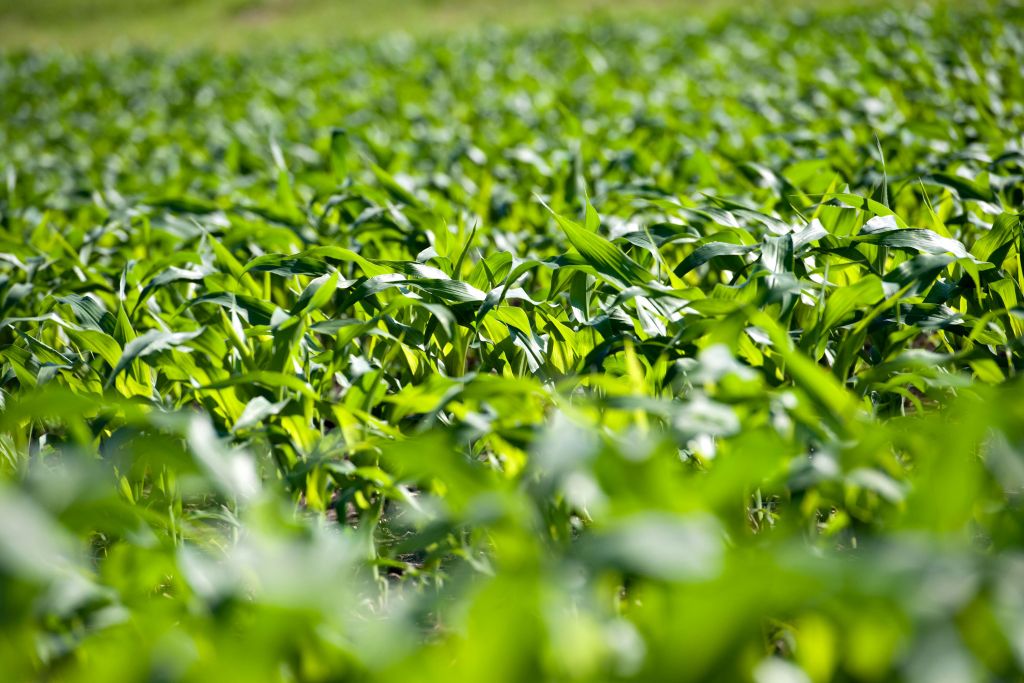Economy
High Expectations Remain as Crop Production Rises
Published
7 years agoon

- High Expectations Remain as Cash Crop Production Rises
While the nation has seen an increase in the production of cash crops, stakeholders have highlighted the need for the Federal Government to intensify effort to boost local food production, ANNA OKON writes.
The Minister of Agriculture and Rural Development, Chief Audu Ogbeh, recently inaugurated the exportation of 72 tonnes of yam to the United States and the United Kingdom.
That was the first time Nigerian yams would be exported to Europe under the brand, ‘Nigeria’.
Before now, according to the Director-General, Standards Organisation of Nigeria, Osita Aboloma, Nigerian yams exported to Europe carried the stamp of Ghana, Cameroon or some other West African countries.
The reason for this, Aboloma explained, was poor packaging, a challenge Ogbeh has succeeded in taking care of.
Following the steep fall in global oil prices, there were increasing calls for the diversification of the Nigerian economy.
To diversify the economy, the Federal Government turned to agriculture, a sector that suffered decades of neglect due to the over-reliance on crude oil wealth.
The minister started a programme tagged, ‘Agricultural Sector Roadmap (the Green Alternative), Agricultural Promotion Policy (2016 – 2020)’.
He explained that the APP would seek to resolve inability of the country to meet local food demand and inability to export at quality levels required for market success.
The government consolidated efforts in the rice sector, which had been the anchor project of the immediate past minister.
As part of an aggressive programme to solve the rice supply deficit, the Central Bank of Nigeria deployed its Anchor Borrowers’ Scheme, an initiative that made funds available to farmers in Kebbi and other major rice producing states.
The pilot phase of the project, according to an Executive Director at the Bank of Industry, Jonathan Tobin, benefitted over 75,000 farmers and later produced over two million metric tonnes of rice.
In March 2016, the president launched dry season rice farming in Kebbi. With this initiative, the crop could now be grown round the year instead of being grown only during the rainy season.
The result was that by May 2017, the state had led the production of milled rice by 3.56 million metric tonnes, and according to a report released by Growth and Employment in States (GEMS4), a programme funded by the United Kingdom Department for International Development, Nigeria had netted 5.7 million tonnes of milled rice bringing its rice production closer to the 7 million tonnes needed to meet local demand.
Inspired by the need to conserve scarce foreign exchange, the success of the project and desirous of encouraging more investment in the sector, the government had earlier banned rice from coming in through the land borders in March 2016.
The government stuck to its guns on the ban despite opposition from several quarters.
The success of the project also opened up collaboration between the Lagos State and Kebbi, where rice was fed to the over 2.5 million metric tonnes capacity of rice mills established by the Lagos State Government.
The collaboration resulted in the production of LAKE Rice which was sold for N12, 000 per 50 kg bag to customers in December 2016 at a time when the same quantity sold for between N18, 000 and N20, 000.
The government then set plans in motion to duplicate the success in other agro produce.
Earlier in 2015, the Nigerian Export Promotion Council had identified 13 National Strategic Export Products that would replace oil as foreign exchange earner.
The Executive Director and Chief Executive Officer of NEPC, Mr. Segun Awolowo, listed five key cash crops – palm oil, cocoa, sugar, rice and cashew – as the agro produce under the NSEPs.
He noted that the crops would be grown through the One State One Product programme where each state is encouraged to produce in large quantity, a crop in which it has comparative advantage.
The government also embarked on several other initiatives including the fertiliser initiative where fertilisers and seeds were sold to farmers directly at subsidised price.
The nation’s agro export increased by 82 per cent in the first quarter of 2017 from four per cent in the last quarter of 2016.
Sesame seeds, soya beans, shrimps/prawns, cashew nuts and palm kernel became the largest agro produce exports in Q1 2017, netting combined revenue of N25.09bn, according to data obtained from the National Bureau of Statistics.
Sesame seed topped the earnings list with N13.03bn, followed by soya beans, which earned revenue of N4.97bn; frozen shrimps and prawns, N3.39bn, cashew nuts in shell, N2.44bn, and crude palm kernel, N1.26bn.
Analysts have criticised the export of yam, as the price has increased from N150 per medium tuber in 2014 to about N600.
A professor of Economics at the University of Uyo, Leo Ukpong, said the government needed to deploy research to boost local food production so that there would be enough for the local population and the surplus could be sent to the export market.
The Director-General, Lagos Chamber of Commerce and Industry, Mr. Muda Yusuf, stressed the need to invest in boosting local production before feeding the export market.
He said, “There is a need to get our priorities right. The major preoccupation of the agriculture ministry at this time should be how to improve productivity in agriculture. The sector is still dominated by small-holder farmers that do not have the capacity to support the realisation of the vision of food security for the country.
“The sector is grappling with serious issues of high cost of farm inputs including agrochemicals, high cost of agricultural machineries and equipment, access to land for mechanised farming, sustainable off-takers of agricultural products, access to finance (especially working capital by investors in the sector), security challenges faced by farmers because of the activities of herdsmen and many more. These are the issues I expect the agriculture ministry to be addressing now.”
A pharmacist, Mr. Michael Okafor, noted that the government could have turned the yam into Pharmaceutical Grade Starch and sold it to the pharmaceutical sector, which was currently importing the input.
He stated that instead of the N18m that the government could make from the 72 tonnes of yam, it could have made N84m profit from the sale of PGS locally.
He said, “If 72 tonnes of yam is processed to PGS, (that is the major component of tablets and capsules), we will get about 9.7 tonnes of pure PGS. PGS goes for anywhere from $20 – 40/kg in the international market.
“Ogbeh’s 72 tonnes of yam which will be sold at the international market for N18m is, therefore, worth a princely N102m if it was processed to PGS (assuming it is sold for $30/kg, just to be conservative). So, N18m worth of yam, processed to N102m, would have generated a profit of about 84m.”
The rush to export and earn dollars by farmers had also deprived the local poultry industry of feed.
The President, Poultry Association of Nigeria, Dr. Ayoola Oduntan, told our correspondent that farmers were more interested in selling corn and soya beans outside Nigeria to earn dollars.
He said that the situation had created scarcity, which had made the price of soya beans and maize to go up and become unreachable to poultry farmers, resulting in the increase in prices of chickens and eggs.
Eggs witnessed an increase in price from N15 to N50 between 2015 and 2017.
The government expects more investors to take interest in the agro sector while the investors are seeking an enabling environment for this to happen.
The government has been encouraging non-oil exporters by relaxing the rule on utilisation of export proceeds.
“The exchange rate is now better for exporters than before. The banks are no longer exchanging our dollars strictly at the official rate. So, there is a lot of encouragement to invest and declare exports,” the National President, Federation of Agricultural Commodities Association of Nigeria, Dr. Victor Iyama, said.
The National President, Nigerian Association of Chambers of Commerce, Industry Mines and Agriculture, Chief Alaba Lawson, advised the government to make lands and machinery and improved seedlings available, adding that the private sector was all set to invest heavily in the sector.
Is the CEO and Founder of Investors King Limited. He is a seasoned foreign exchange research analyst and a published author on Yahoo Finance, Business Insider, Nasdaq, Entrepreneur.com, Investorplace, and other prominent platforms. With over two decades of experience in global financial markets, Olukoya is well-recognized in the industry.

You may like
-


Zhongshang Fucheng Moves to Auction Nigerian Properties in UK Following $70M Arbitration Award
-


Nigerians and Indians Lead UK Job Market Growth Amid Post-Brexit Migration Shifts
-


Violent Protests Erupt Across Nigeria, Leaving Six Dead and Many Injured
-


Nigerian President Tinubu Condemns Protest Plans Over Economic Woes
-


Nigeria to Suspend Import Levies on Food Crops to Ease Inflation Pressure
-


Nigeria Leads Africa in Private Equity Deals, Records $2.59 Billion in Q1 2024








